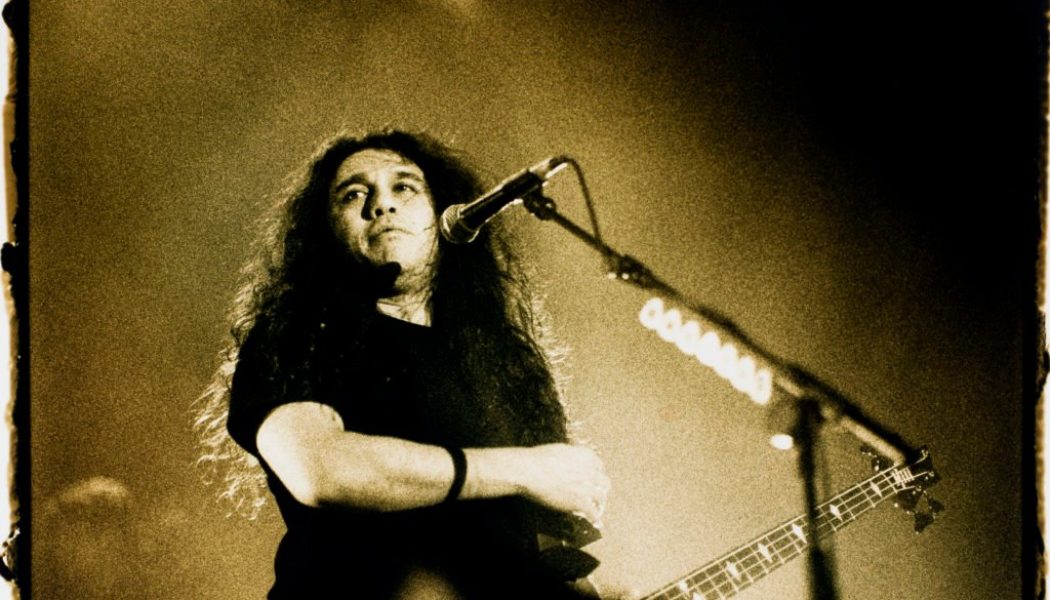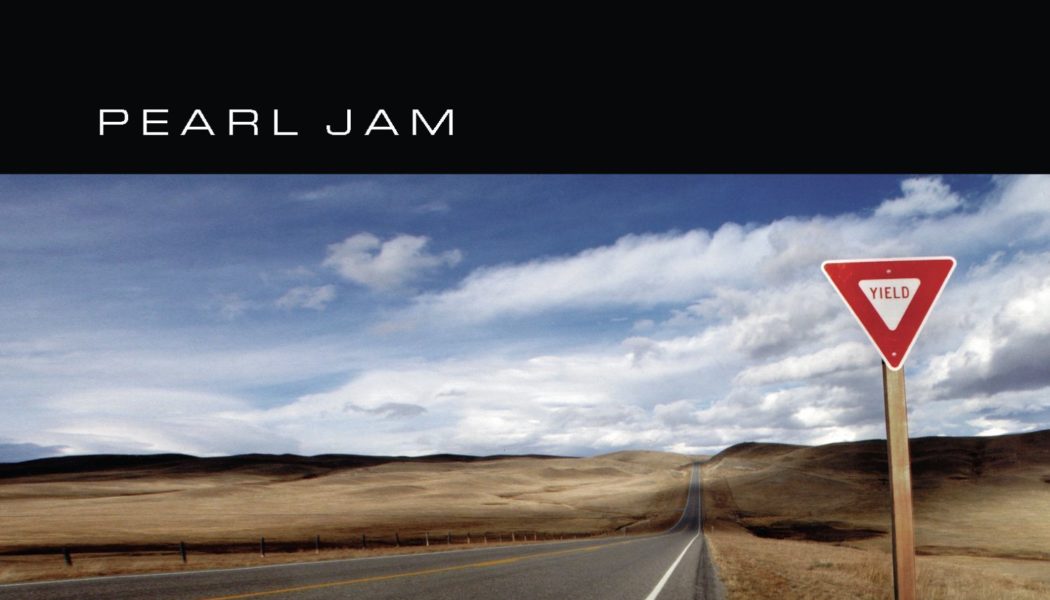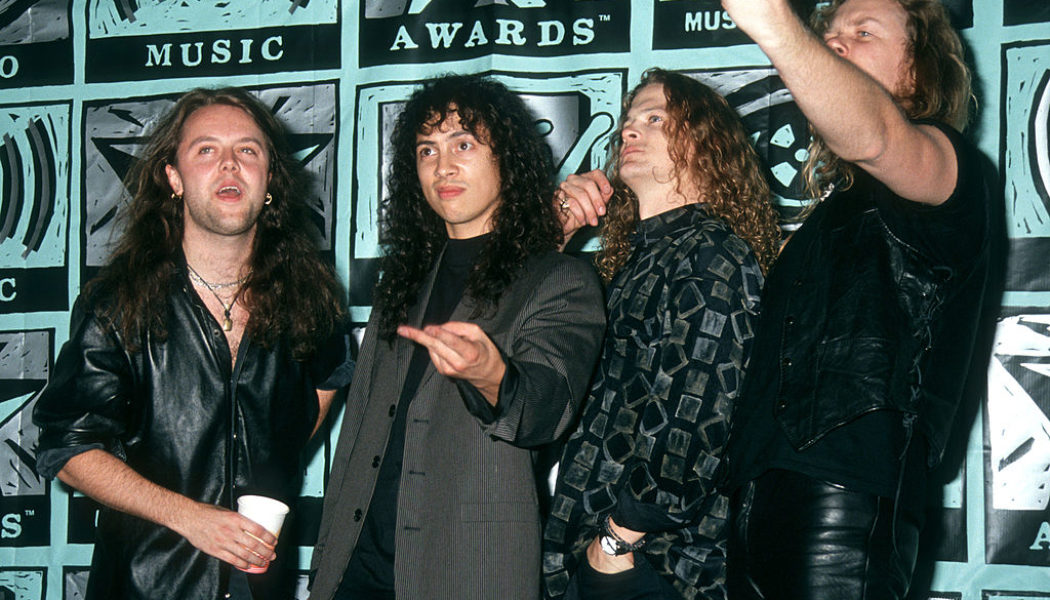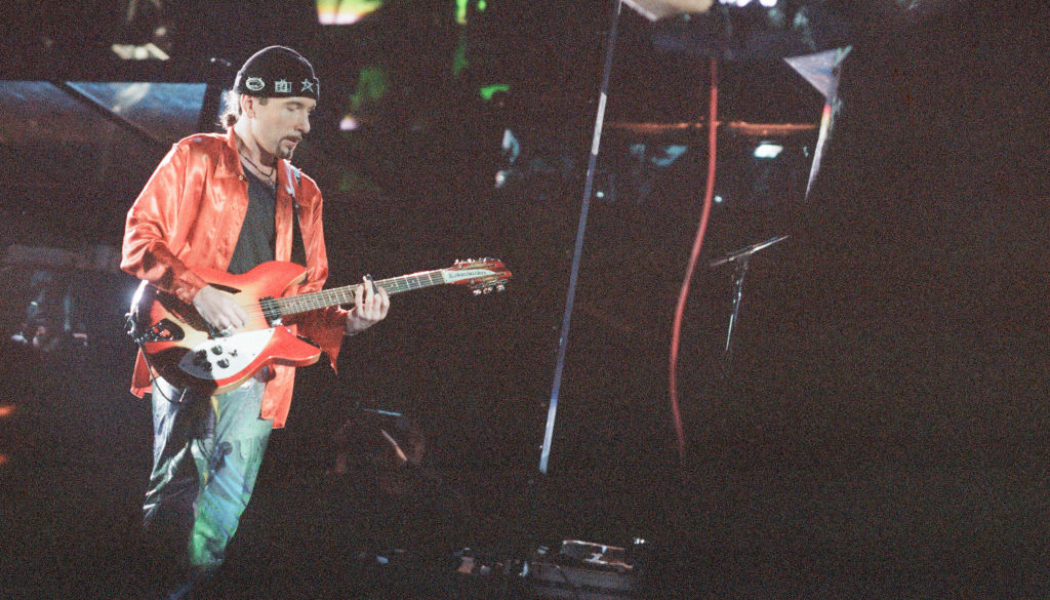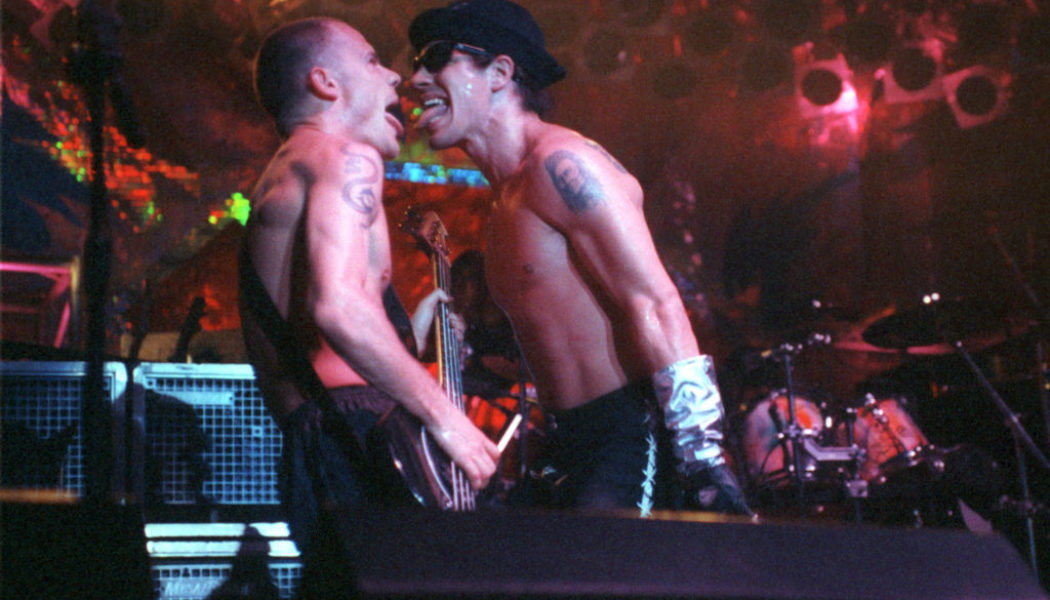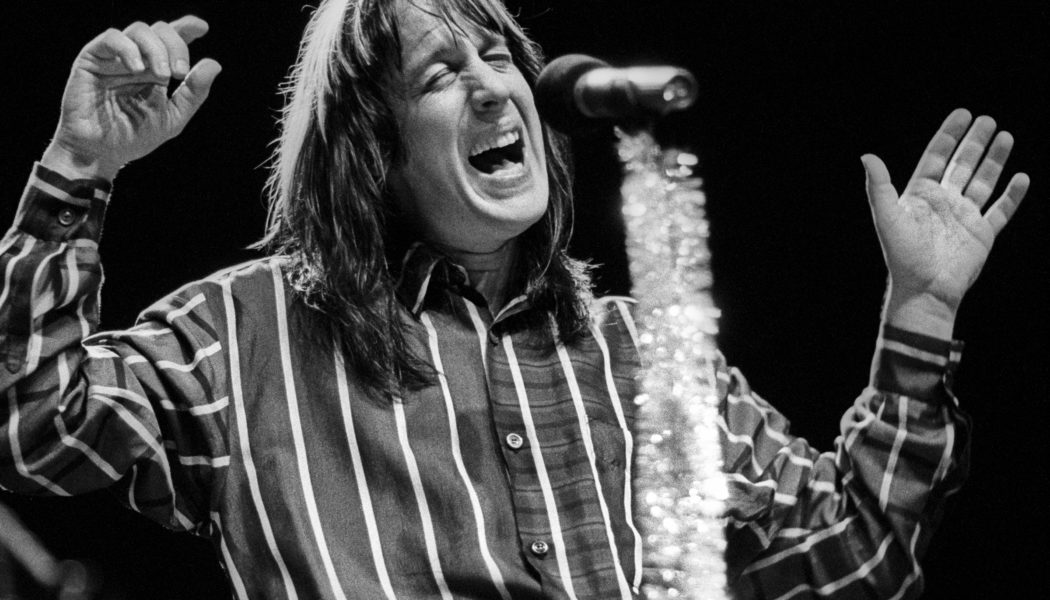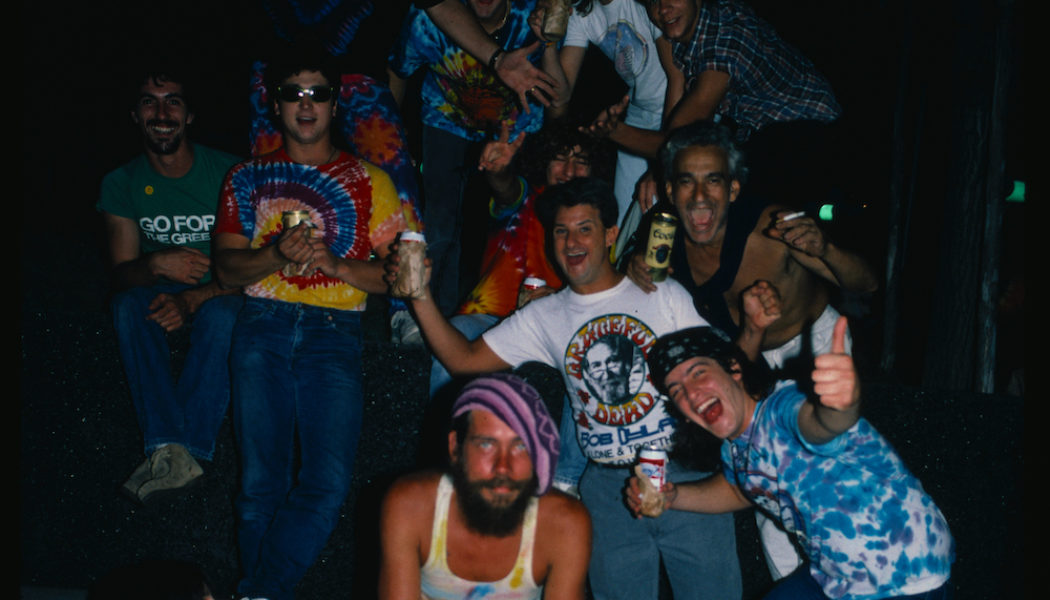Archives
Desperately Seeking Satan: Our 1989 Slayer Feature
This article originally appeared in the May 1989 issue of SPIN. I do a talk show called “TALK-BACK with Bob Larson,” syndicated in nearly 200 markets. Not just any talk show. A religious talk show that presents the Christian perspective on topics ranging from sex to suicide, racism to rock ‘n’ roll. I’m a Christian. The born-again kind. That means I believe Jesus Christ is the Son of God, who died for our sins and rose again from the dead to give us the gift of eternal life. They play in a heavy metal rock band. Not just any metal band. A black/thrash/speed metal band with lyrics describing sex with corpses and songs offering prayers of praise to Satan. Which presumably means they are Satanists. Why else would Slayer sing, “Warriors from the gates of hell/In Lord Satan we trust” (“Show No ...
Classic Reviews: Pearl Jam, Yield
This article originally appeared in the March 1998 issue of SPIN. Angels are God’s designated hitters. They’re represented in Judaism, Christianity, and Islam, among many other religions; they pretty much show up anyplace people put out a punch bowl and a turntable. Messengers of supreme beings, keepers of the gate, angels are the ones who feel the full weight of responsibility. “Just call me an angel,” Eddie Vedder seems to groan over the fadeout of a new song on Pearl Jam‘s fifth album. And he’s got plenty of company. Angels are all over Yield: “Given to Fly” is about a seraph who breaks free; there are references to angels in the dirt; and “Do the Evolution” even features a choir singing hallelujahs. Angels have become Vedder’s nervy way of talking about himself these days—he’s a m...
U2 on Tour: Our 1992 Cover Story
This article originally appeared in the July 1992 issue of SPIN. In honor of Achtung Baby turning 30, we’re republishing it here. “What you can never get in your book is the utter, total boredom of being in a band [on tour].” —John Lydon, quoted in Jon Savage’s England’s Dreaming April 9, 1992: Rolling through the sun-scrubbed Arizona landscape on the way to Tucson. Last night was, I think, Austin. Axl Rose was at the show, I guess he wanted to hang out with rock stars who are even shorter than him. Strange that the desert really does look like a Roadrunner cartoon; except in real life, the rock-infested hills are less friendly, looming like scars carved from the unrealistically blue sky. Antitank fighter planes swoop low over the cactus, looking, we hope, for someone else. ...
Really the Blues: Our 1993 PJ Harvey Feature
This article originally appeared in the August 1993 issue of SPIN. Polly Harvey is standing in the rain, in the middle of a generic English small-town shopping street. The 23-year-old singer is wearing a plush fake leopard-skin coat, her usual Olive Oyl bun let loose into barely restrained curly waves. She is bone-tired, fed up with interviews and photo sessions, sick of being the latest fixation in the music press’s neurotic search for new blood. Although she leads me to a local tea house, Harvey looks like she’d rather be getting a tetanus shot. I’m deeply flattered. Harvey and her band, PJ Harvey, released one of the most talked-about debuts of last year, Dry, and have just issued the ballyhooed follow-up, Rid of Me. Critics have wet themselves over her striking image and her...
Middle-American Gothic: SPIN’s 2006 Feature By Jonathan Ames
Not to be too much of a kiss-ass brown-noser — God, those two phrases, especially when paired, reveal themselves to be rather vulgar — but I have really loved writing for SPIN. In life, I like to go on adventures and see what happens. If I can do this and combine it with journalism, then my work life and my life happily cross paths. Essentially, I get paid for being an idiot and reporting on it! This, naturally, is in opposition to just being an idiot and not getting paid, which is what usually happens. Anyway, a few years ago, SPIN sent me to a goth music festival in Illinois. At the time, I knew nothing of goth music or the people who like it. One of my early literary heroes was Hunter S. Thompson, and so I always like to thrust myself into the story I’m covering. This gives me an excuse...
Bridge Over Troubled Water: Our 1993 Red Hot Chili Peppers Cover Story
This article originally appeared in the August 1993 issue of SPIN. Until April 1986, when the return of Jack Irons, the Red Hot Chili Peppers‘ original drummer, brought some welcome reinforcements, bassist Flea was fighting a losing battle against frontman Anthony Kiedis‘s and guitarist Hillel Slovak’s growing addictions. Any drugs Flea had used in the past were of the recreational variety—pot and the occasional tab of acid. Alone, however, he was unable to stand against the tide of self-destruction that was threatening to sweep the Red Hot Chili Peppers into the abyss. For Flea, Irons’s return didn’t merely slot into place the last piece of the band’s jigsaw of friendship; it also offered him some breathing space. “Hillel was a wild partier. Before he got carried away with the ...
Todd Rundgren, Dana Carvey, and Hal Willner in Conversation: From Our 1993 SNL Issue
This story originally appeared in the February 1993 issue of Spin, which was partially written and guest-edited by members of the SNL cast. Read interviews and stories from comedy icons of the era–Chris Rock, Adam Sandler, Tim Meadows, Lorne Michaels and others–in our package of highlighted stories from the issue. The word genius is thrown around ever so loosely nowadays, but in the case of Todd Rundgren, anyone familiar with his work would agree that he fits that category. For almost three decades, Rundgren has been a major originator in the arts, from his early days leading the influential Philly-based band Nazz through his pop hits period (“Hello It’s Me,” “I Saw the Light”), to his pioneering videos in the early...
Not Fade Away: Our 1995 Neil Young Cover Story
This article originally appeared in the September 1995 issue of SPIN. It’s getting harder and harder to remember that, for much of his career, Neil Young has been regarded—if loved—as a self-destructive oddball. Even in his most celebrated decade, the 1970s, he shelved entire albums; others, such as Time Fades Away and On the Beach, were so determinedly marginal that they’ve never been reissued on CD. Then, in the ’80s, he released a notorious series of rockabilly, synth-pop, and country experiments so off-putting that his label, Geffen, eventually sued him for not sounding like himself. But starting with “Rockin in the Free World,” the anthem that bookends 1989’s Freedom, he went back to being Neil Young. Ragged Glory was a typically sprawling Crazy Horse album; Harvest Moon revisite...
High Rollers: Our 1993 Deadhead Feature
This article originally appeared in the August 1993 issue of SPIN. To a Deadhead, Las Vegas is the other side of the universe. —Bill Graham It’s a match made in heaven. —Sean, a 100-show veteran Deadhead from Burbank For the third year in a row, Deadheads descended on Las Vegas, Nevada, that unlikeliest of hippie hangouts, for a spring weekend of Grateful Dead shows. There had been grumblings the year before—from casino owners and from a local politician (whose ’67 Porsche had been dented when a Deadhead jumped on the hood), but they were shouted down and the Deadheads were invited back. Most agreed with Sean from Burbank. “It’s fun to be here,” said Kelly, a beautiful 21-year-old from Barbados who follows the Dead with her friends Moon and Molly. “It’s, like, here’s a town you’re al...
